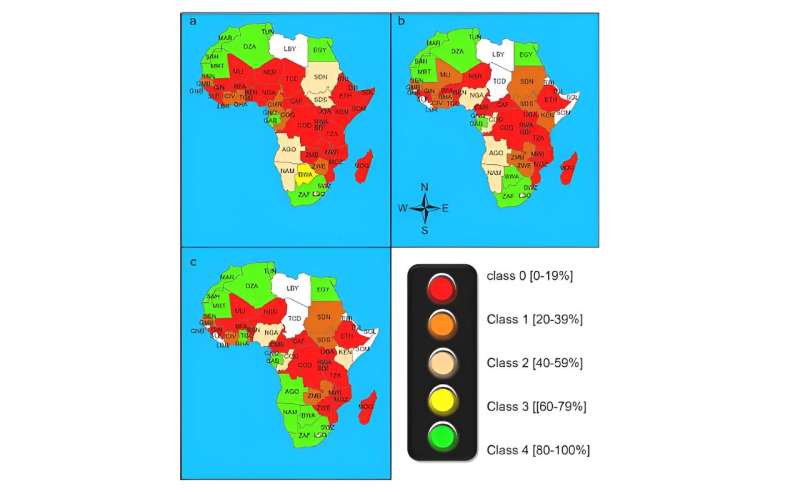This article has been reviewed according to Science X's editorial process and policies. Editors have highlighted the following attributes while ensuring the content's credibility:
fact-checked
trusted source
proofread
More than 1.1 billion African people unlikely to have access to clean cooking fuels and technologies by 2050

A new Loughborough University study on clean energy accessibility in Africa forecasts that 1.1 billion people will be without eco-friendly cooking fuels or technologies by 2050.
Researchers in the Centre for Renewable Energy Systems Technology have used machine learning—a branch of artificial intelligence—to create a computer model that predicts future clean cooking landscapes in Sub-Saharan Africa.
Currently, around 940 million people in Sub-Saharan Africa lack access to clean cooking fuels and technologies—which are deemed 'clean' due to the levels of particulate matter and carbon monoxide they emit—and are consequently constrained to cooking with polluting biomass fuels, such as charcoal and wood.
There is a global effort to accelerate the transition to clean cooking due to the detrimental impact of burning biomass fuels on people and planet. However, the Loughborough research, published in the Energy and AI journal, highlights that the rate of progress needs to increase drastically in Africa.
The computer model forecasts that more than 840 million African people will not have access to clean cooking fuels or technologies in 2030 and this will rise to over 1.1 billion people in 2050.
When looking at the data on a country-level, the model predicts that though access to clean cooking will increase in some parts of Africa, less than 20% of the population in 16 countries will have access to clean cooking fuels and technologies in 2030, and this ups to 18 countries in 2050.
The predicted access rate of clean cooking is presented as a traffic light system. (a) Access rate to clean cooking in 2020, (b) access to clean cooking in 2030, (c) access to clean cooking in 2050. Countries are categorized as classes based on the percentage of the population that will have access to clean cooking. (Class 0: 0—19% population with access to clean cooking, class 1: 20—39%, class 2: 40—59%, class 3: 60—79%, class 4: 80—100%).

The model, trained on holistic and historical country-level datasets, works by analyzing population growth trends and factors influencing clean cooking accessibility, such as electricity availability and affordability.
The research—by doctoral researcher Mulako Mukelabai and Dr. Richard Blanchard, of Loughborough University, along with Professor Upul Wijayantha, now at Cranfield University—highlights that high electricity access rates do not translate into high rates of access to clean cooking, due to factors such as high electricity tariffs.
The researchers also found that the projected electricity generation for 2030 needs to triple if Sub-Saharan African countries are to attain the desired goal of enabling more than 80% of the population to access clean cooking.
The team estimates achieving the 80% access rate in all countries by 2030 would require an investment of $14.5 trillion (or $2.1 trillion annually).
Though this would require the support of other nations, the researchers underscore the importance of increasing income-generating activities in Africa, with hydrogen generation identified as a catalyst for manufacturing growth in key sectors.
Mulako said, "The findings of this study evidence the need for a rapid paradigm shift in the developing world energy sciences to address energy poverty."
"We must act as the slow-moving access rate to clean cooking causes deforestation, habitat loss, indoor pollution, inequality, sustains low economic activities, and causes about 3.2 million deaths per year, including over 237,000 deaths of children under the age of five in 2020."
"A fundamental approach that focuses on improving and sustaining the financial capacity of households through a systems approach is needed so people can afford electricity or fuels for cooking."
More information: M.D. Mukelabai et al, Using machine learning to expound energy poverty in the global south: Understanding and predicting access to cooking with clean energy, Energy and AI (2023). DOI: 10.1016/j.egyai.2023.100290
















